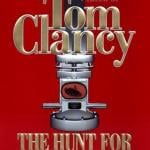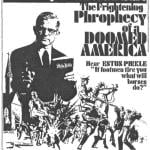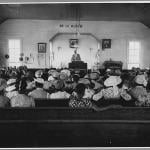Three days since my last blog post? Eep. It’s been a very lethargic week, but I’ll toss out two quick links before I head out the door.
1. The New York Times reports that typographers and graphic designers are miffed by the inaccuracies and anachronisms of certain recent movies:
“Good Night, and Good Luck,” the movie about Edward R. Murrow’s battle to expose the demagoguery of Joseph R. McCarthy, has received both critical and popular acclaim. But the movie has its fervent detractors – and they aren’t people nostalgic for the days of backyard fallout shelters. They are typographers and graphic designers. Their charge: typographical inaccuracy.
It appears that the CBS News sign, prominently displayed in the film’s carefully reconstructed New York newsroom, uses the typeface Helvetica. But Helvetica was not designed until 1957, the year McCarthy died. The movie takes place in the early 1950’s.
“I thought it was a bit jarring,” said Michael Bierut, a graphic designer at Pentagram Studio in New York. “After all, even in 1957, Helvetica was an exotica Swiss import.”
He’s not the only one. And “Good Night, and Good Luck” isn’t the only malefactor. Hollywood features that spend millions on period production design are often rife with inaccurate typography. And among a certain segment of the audience – a certain very narrow segment of the audience – that is an outrage.
Mark Simonson, a type designer in St. Paul, Minn., maintains a Web site (www.ms-studio.com/typecasting.html) that exposes cinematic typographical inaccuracies to the withering light of day. Take the 2000 film “Chocolat.” Though the film takes place in 1950’s France, in a close-up shot of a public notice, the headline is set in ITC Benguiat, which he said made its debut in 1978 and was popular mainly in the 80’s. “I almost laughed,” Mr. Simonson writes.
Then there is “L.A. Confidential,” set in 1950’s Los Angeles. It was “tightly written, well acted, beautifully filmed,” Mr. Simonson writes, “but pretty mediocre in its use of type.”
Worse than any of these, to Mr. Bierut, is “Titanic.” The dials on the pressure gauges, he said, are in Helvetica, though the ship went down in 1912. “To me, that’s like taking out a Palm Pilot on the deck of the Titanic,” he said.
Scott Stowell, the founder of Open, a New York graphic design studio, gripes: “The thing that bugs me is that they create these elaborate period pieces for films. They put old cars on the street and get the hairstyles right, but typography, it seems like they don’t know or care.” . . .
FWIW, I can remember proudly pointing at movie screens and saying “That’s Palatino!” when the credits rolled, back when I first got into desktop publishing about 15 years ago, so this is definitely my kind of nit-picking.
2. Cathy Seipp had a piece in the Los Angeles Times a few weeks ago looking at how C.S. Lewis, author of Mere Christianity and The Chronicles of Narnia, has enemies not only on the left but also on the right, thanks to certain fundamentalists who think Lewis was spreading pagan idolatry. The article ends on this amusing note:
My shock at this bizarre anti-C.S. Lewis campaign eventually became a kind of amazed appreciation. The screeds from Robbins and Zakula are actually quite well written — disturbingly so, in fact. And the Van Nattens offer up a strangely compelling American folk art that can’t be faked. They also complain, for instance, that Lewis smoked and drank and that he used the word “ass” four times in books written for children.
OK, he was writing about a donkey in these instances, Mary Van Natten admits, and “being British, it probably did not mean the same to him as it does to Americans (as a swear word), but he could have left it out, especially since he only used it four times and did use ‘donkey’ in other places. However, considering the filthy state of his mind, it is possible that he thought this cute.”
As it happens, the name of the Van Natten website is Balaam’s Ass, not Balaam’s Donkey. But apparently that particular use of the word “ass” is allowed, since it’s directly from the King James Bible, and the website warns that no one under 18 should enter.
However, I noticed that its name did get them listed on a couple of porn aggregators emphasizing anal sex. And I’d say they kind of deserved it.
FWIW, this last bit kind of reminds me of how one website I recently checked had three Google ads at the top: the first was for a pro-creationism website; the second was for a pro-evolution website; and the third, headlined “Gay Galapagos”, was for “luxury gay-friendly cruises to the Galapagos.” Apparently a single reference to Charles Darwin prompts all three of these associations. Come to think of it, this also reminds me of a recent story regarding a scandal at Wal-Mart. It seems we live in an age of automated embarrassments.












